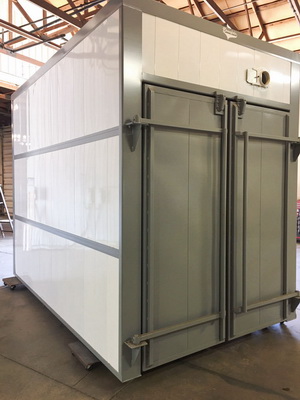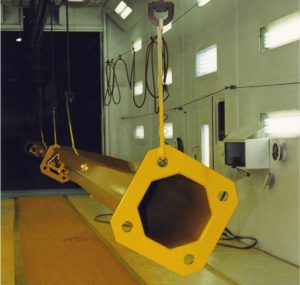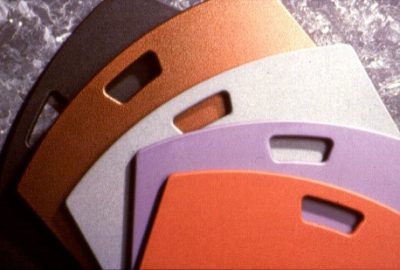ASTM International Standard Worldwide
Powder coating testing is designed for two purposes:
- Performance reliability, (i.e.,to determine the suitability of a coating for a given use.)
- Quality control, (i.e., to maintain uniform quality in coating application and raw materials applied.)
Some laboratory tests for reliability can be related directly to performance under service conditions, thus making coating evaluation simple. However, in other cases the evaluation of a coating in the laboratory is inadequate either because of time, or because there are no suitable methods for measuring the desired properties, or because the coating is designed for long-term service and the laboratory tests cannot be correlated. Generally, it is not possible to devise short-term tests that will give positive correlation with service because the tests must be accelerated by increasing the severity of exposure. Laboratory tests are set up to screen coatings, and the selected coatings must then be evaluated under actual service conditions. If a given material performs better in carefully selected laboratory tests, the formulator is generally confident that it will also perform better in actual service and will therefore approach field trials with considerable optimism.
Some examples of tests that are commonly performed on products that have been powdercoated are listed below:
The following examples are of actual tests that companies have been, or are now performing on powdercoated surfaces on the finishing line in actual production. Each has an ASTM testing standard.
(1) SALT SPRAY CORROSION TEST (ASTM B117)
Use a 5% salt solution at 92-97 degrees F in a sealed weather cabinet. Scribe X in steel zinc phosphated test panel to bare metal. Inspect every 24 hours. End test and total hours after 1/4″ creepage from scribed area. Creepage shall not exceed 1/4″ in either direction from scribe line after 500 hours exposure.
(2) IMPACT TEST (ASTM D2794)
Coating on .036 inch thick phosphated steel panel shall withstand impact with 1/2″ Gardener impact tester ball at 26 inch pounds direct and reverse. No grazing or loss of adhesion. Finish shall not be able to be removed at impact area with tape.
(3) CHEMICAL RESISTANCE TEST (ASTM D1308)
Place approximately 10 drops of test solvent, consisting of 95% by weight toluene and 5% by weight Methal Ethyl Keytone on the surface of the coating. Allow to stand for 30 seconds. Wipe off with soft, dry cloth. Coating shall show no more than a slight circular mark.
(4) CROSS HATCH ADHESION TEST (ASTM D3359)
Scribe parallel lines through coating to substrate, 1/4″ apart over a distance of one inch. Scribe another set of parallel lines 1/4″ apart and perpendicular to the first set. Apply any sticky tape then remove slowly. Results should be no lifting of the cured powder between scribe lines.
(5) HARDNESS TEST (ASTM D3363)
Faber Castell wood pencils are used in hardness of 1,2,3,4,. Coating shall show no marks from 2H pencil.
(6) BEND TEST (ASTM D522)
Coating on .036 inch thick phosphated steel panel shall withstand 180 degree bend over 1/4″ mandrel. No crazing or loss of adhesion and finish at the bend be able to be removed with tape.
(7) GLOSS TEST (ASTM D523)
Test coated flat panel with Gardener 60 degree meter. Coating shall not vary + or – 5% from data sheet requirements on each material supplied.
As with any test accuracy depends on controlling the factors that are use within the testing procedures, i.e. the pencil hardness test depends on how much pressure is applied behind the pencil. Testing procedures are set up according to ASTM standards to establish nationally accepted guidelines. True comparative testing should be performed on finishes at the same time under the same conditions whenever possible. This will insure that the results, upon conclusion of the tests, are truly relative.
Related Resources
- Building Environment Enclosures
- Engineered Buildings
- Powder Coaters Corner
- Powder Coating Industry Research
- Contact







